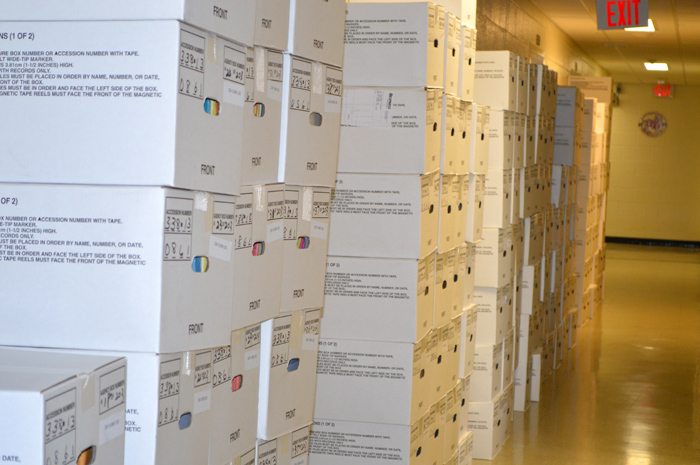
By Heather McDowell Duong, USAMRMC PAO
The U.S. Army Medical Materiel Development Activity’s Regulatory Operations branch continues to blaze the environmental sustainability trail at Detrick, saving money and time along the way.
In early 2013, RO, a branch within USAMMDA’s Division of Regulated Activities and Compliance powered off printers and began enforcing its self-appointed mandate to become a paperless office. For RO’s Document Control Group, this meant that they would refrain from generating or storing paper for any active product development efforts.
“So what’s the big deal?” asked Regulatory Operations Chief Tracy Ulderich. “This move will eliminate thousands upon thousands of reams of paper annually. That’s why folks should care,” she explained.
DRAC comprises a multidisciplinary team of regulatory affairs and compliance professionals dedicated to supporting USAMMDA’s mission of developing medical products for the warfighter. As the Office of the Surgeon General Sponsor’s representative for the Army for medical materiel development, the division must adhere to Food and Drug Administration regulatory requirements in addition to DoD and Army regulations.
Ulderich explained how RO’s work with the FDA led to the generation of vast amounts of documentation.

U.S. Army Medical Materiel Development Activity’s Regulatory Operations Branch began enforcing its self-imposed mandate to become a paperless office in early 2013. Staff is working to electronically archive vast amounts of documentation dating back to the 1900s.
“Let’s say you are creating a nasal spray,” said Ulderich, as an example. “You submit a product application to the FDA. The initial application could be anywhere between 200 to 2,000 pages. As the product is further developed, paperwork requirements grow exponentially.”
According to Ulderich, in addition to generating the paperwork required by the FDA, RO was also maintaining hard copy files of submitted documentation together with any associated internal paperwork. USAMMDA currently has approximately 80 active products.
In addition to saving trees, Document Control Specialist Sharon Reynolds noted that going paperless will save staff hours.
“An investigational new drug or new drug application submission can be up to 30 volumes,” said Reynolds. “That’s a lot of man-hours we will save, as we won’t have to [quality control] mountains of paper, page by page, against the legacy electronic document management system and the sponsor’s electronic regulatory file.”
Spurred on, in part, by a new FDA requirement to begin submitting applications electronically, and driven by raw frustration with a growing number of hard copy records, RO declared war on all unnecessary use of paper.
The FDA uses a regulatory information management platform called the Electronic Common Technical Document, or eCTD, for electronic regulatory submissions. According to Ulderich, RO acquired its own eCTD capability in 2012 with the help of the Enterprise Information Technology Program Management Office.
“Roll out, training and familiarization with the software took about a year,” said Ulderich.
Now that the system is up and running, RO is able to not only reduce its carbon footprint but also streamline its entire submission process. eCTD allows RO to reference source documents from its Electronic Document Management System. EDMS maintains version control so that even documents created in the earliest stages of development are incorporated into the submission process before they are finalized. RO also maintains product records throughout the product’s lifecycle, from the original application through post-approval maintenance.
“We will have accountability via an audit trail. This will ensure we maintain adherence to CFR 21 Part 11 and remain compliant with regulation,” said Reynolds, explaining the program’s compliance with federal regulations.
According to Ulderich, the office is saving time, space, money and manpower because of this initiative. Electronic submissions are instant.
“Before, our staff was investing time formatting PDFs, inserting bookmarks and hyperlinks. We undid all this effort the moment we then printed a hard copy of the document we so painstakingly formatted,” said Ulderich.
Ulderich added that the office currently pays for storage space to house its archives dating back to the 1900s. Once all documentation has been successfully scanned and cataloged, RO will be able to eliminate contract storage, leading to additional cost savings.
With a proven process in place to successfully archive critical documentation, RO is working to eliminate piles of papers. With an eye on the future they are also working on system upgrades, including enhanced security features and watermarks.
In celebration of the 25th anniversary of the Army Acquisition Corps (AAC), Access is publishing articles that highlight milestones throughout the history of the AAC. Each article marks a moment in acquisition excellence.







